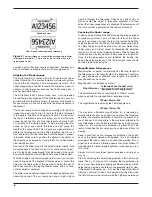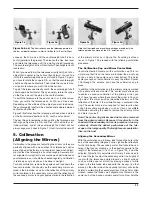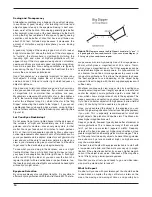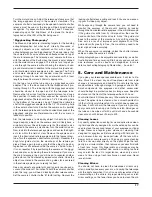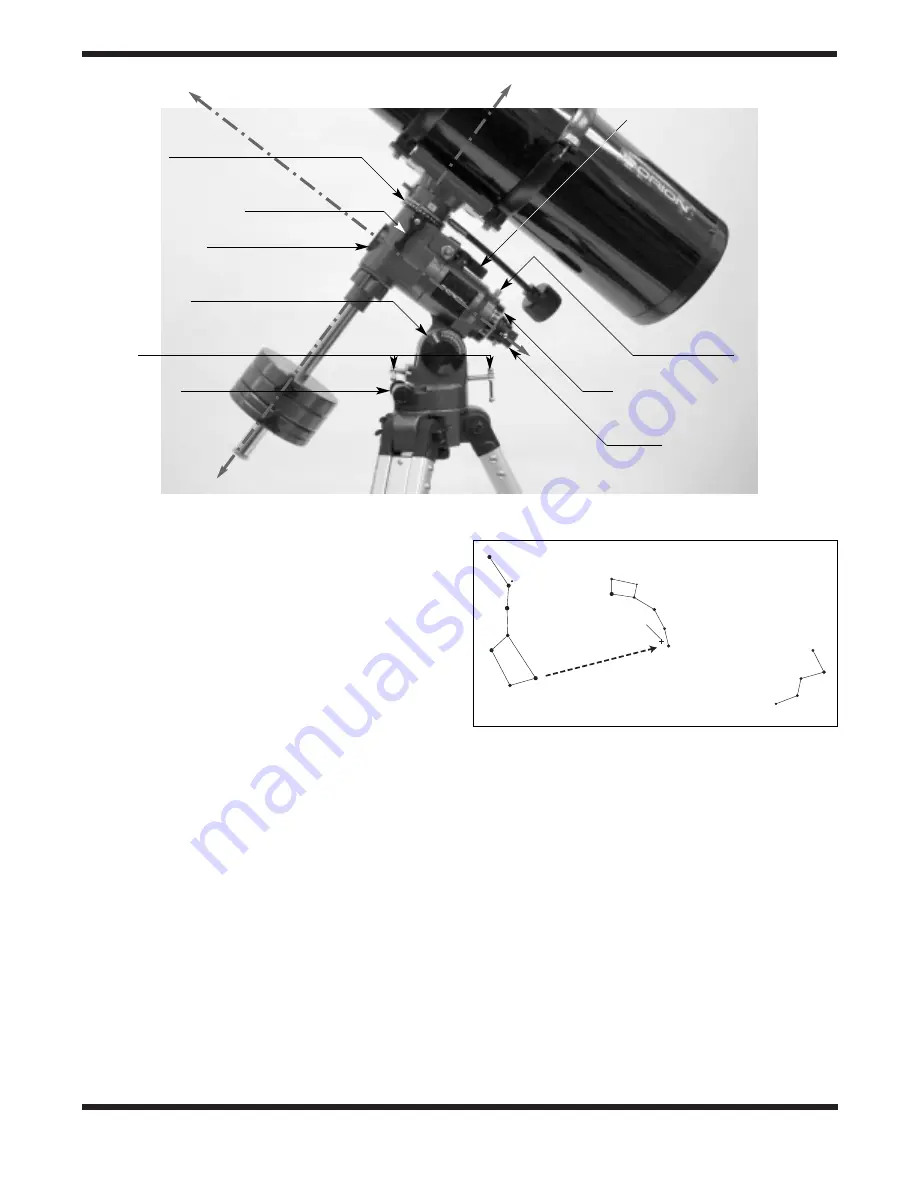
7
piece. To change eyepieces, first loosen the thumbscrews on
the focuser. Then carefully lift the eyepiece out of the holder.
Do not tug or pull the eyepiece to the side, as this will knock
the telescope off its target. Replace the eyepiece with the new
one by sliding it gently into the holder. Re-tighten the thumb-
screws, and focus for your new magnification.
4. Setting Up and Using the
Equatorial Mount
When you look at the night sky, you no doubt have noticed
that the stars appear to move slowly from east to west over
time. That apparent motion is caused by the Earth’s rotation
(from west to east). An equatorial mount (Figure 5) is
designed to compensate for that motion, allowing you to easi-
ly “track” the movement of astronomical objects, thereby
keeping them from drifting out of the telescope’s field of view
while you’re observing.
This is accomplished by slowly rotating the telescope on its right
ascension (R.A.) axis, using only the R.A. slow-motion cable.
But first the R.A. axis of the mount must be aligned with the
Earth’s rotational (polar) axis-a process called polar alignment.
Polar Alignment
For Northern Hemisphere observers, approximate polar
alignment is achieved by pointing the mount’s R.A. axis at the
North Star, or Polaris. It lies within 1° of the north celestial
pole (NCP), which is an extension of the Earth’s rotational
axis out into space. Stars in the Northern Hemisphere appear
to revolve around Polaris.
To find Polaris in the sky, look north and locate the pattern of
the Big Dipper (Figure 6). The two stars at the end of the
“bowl” of the Big Dipper point right to Polaris. Observers in the
Southern Hemisphere aren’t so fortunate to have a bright star
so near the south celestial pole (SCP). The star Sigma
Octantis lies about 1° from the SCP, but it is barely visible with
the naked eye (magnitude 5.5).
For general visual observation, an approximate polar align-
ment is sufficient:
1. Level the equatorial mount by adjusting the length of the
three tripod legs.
2. Loosen one of the latitude adjusting T-bolts and tighten the
other to tilt the mount until the pointer on the latitude scale is
Figure 5:
The equatorial mount of the AstroView 6
Declination
setting circle
Declination lock lever
Front opening in
R.A. axis
Latitude scale
Latitude adjustment
T-bolts
Azimuth fine
adjustment knobs
D
ec
lin
at
io
n
ax
is
Rig
ht
as
ce
ns
io
n
ax
is
Right Ascension
setting circle lock
thumb screw
Right Ascension setting circle
Polar axis finder scope
Right Ascension lock lever
Big Dipper
(in Ursa Major)
Little Dipper
(in Ursa Minor)
Cassiopeia
N.C.P.
Pointe
r
Stars
Polaris
Figure 6.
To find Polaris in the night sky, look north and find the
Big Dipper. Extend an imaginary line from the two "Pointer Stars" in
the bowl of the Big Dipper. Go about five times the distance
between those stars and you'll reach Polaris, which lies within 1° of
the north celestial pole (NCP).
Summary of Contents for AstroView 6 EQ 9827
Page 19: ...19 ...






